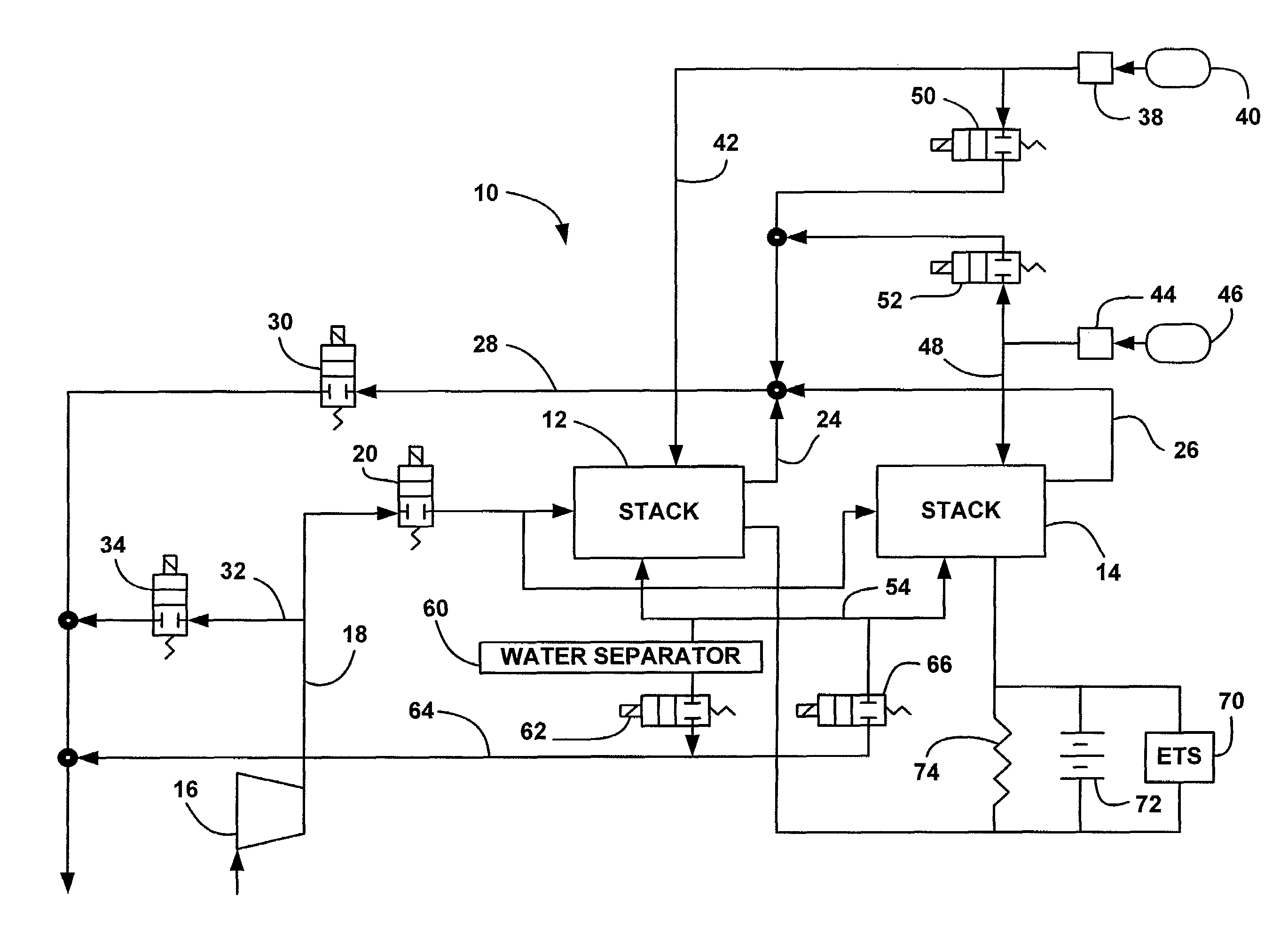Strategies for mitigating cell degradation during start-up and shutdown with H2/N2 storage
a fuel cell and meas technology, applied in the field of system and method for reducing catalyst degradation in the meas of the fuel cell stack, can solve the problems of reducing the support of catalyst particles, reducing the performance of the fuel cell, and thinning the carbon layer, so as to reduce the cathode carbon corrosion
- Summary
- Abstract
- Description
- Claims
- Application Information
AI Technical Summary
Benefits of technology
Problems solved by technology
Method used
Image
Examples
Embodiment Construction
[0020]The following discussion of the embodiments of the invention directed to a system and method for minimizing cathode carbon degradation at system shutdown and start-up is merely exemplary in nature, and is in no way intended to limit the invention or its applications or uses.
[0021]FIG. 1 is a schematic block diagram of a fuel cell system 10 including a first split fuel cell stack 12 and a second split fuel cell stack 14. A compressor 16 provides cathode input air on cathode input line 18 to the split stacks 12 and 14 through a normally closed cathode input valve 20. Cathode exhaust gas is output from the split stack on line 24 and cathode exhaust gas is output from the split stack 14 on line 26 where the cathode exhaust gas is combined into a single cathode output line 28. A normally closed cathode back pressure valve 30 controls the flow of the cathode exhaust gas through the line 28. A cathode by-pass line 32 between the input line 18 and the output line28 allows the cathode ...
PUM
| Property | Measurement | Unit |
|---|---|---|
| pressure | aaaaa | aaaaa |
| pressure | aaaaa | aaaaa |
| flow rate | aaaaa | aaaaa |
Abstract
Description
Claims
Application Information
 Login to View More
Login to View More - R&D
- Intellectual Property
- Life Sciences
- Materials
- Tech Scout
- Unparalleled Data Quality
- Higher Quality Content
- 60% Fewer Hallucinations
Browse by: Latest US Patents, China's latest patents, Technical Efficacy Thesaurus, Application Domain, Technology Topic, Popular Technical Reports.
© 2025 PatSnap. All rights reserved.Legal|Privacy policy|Modern Slavery Act Transparency Statement|Sitemap|About US| Contact US: help@patsnap.com


